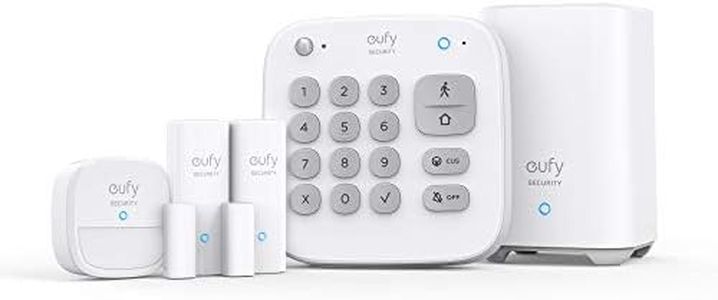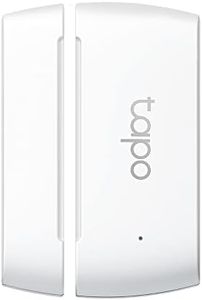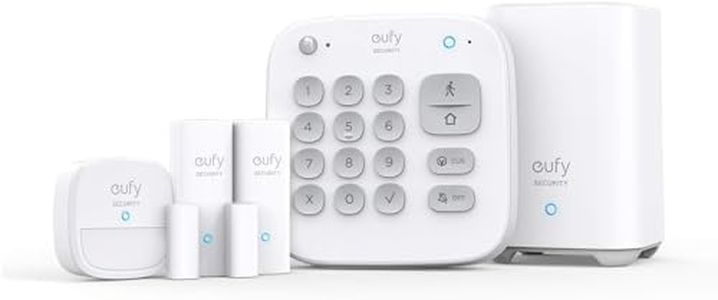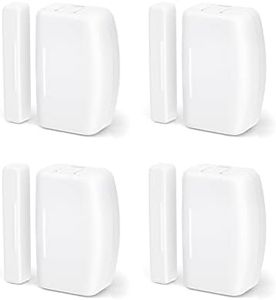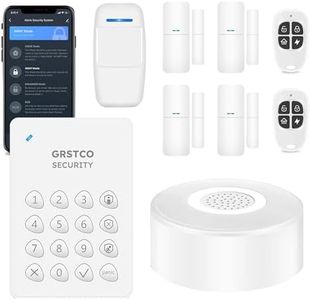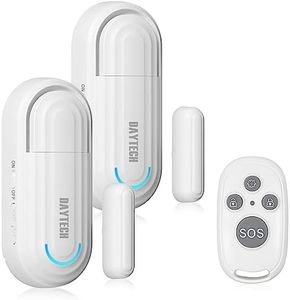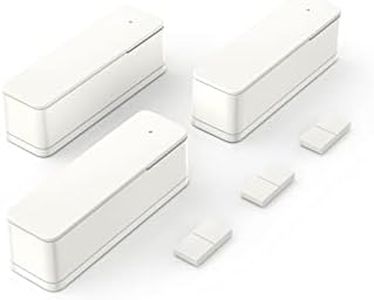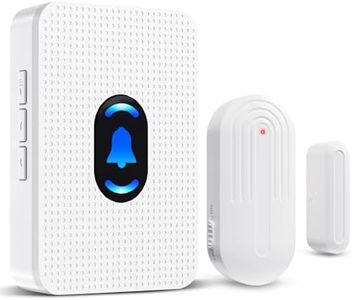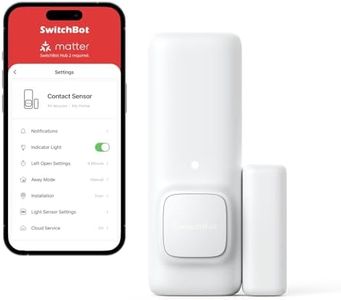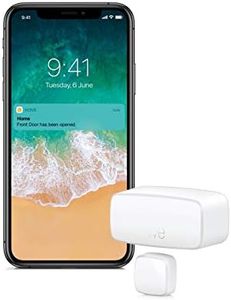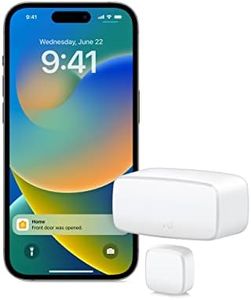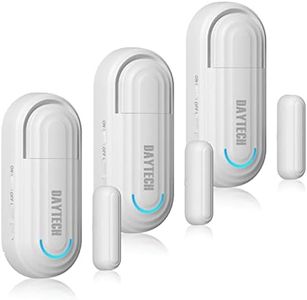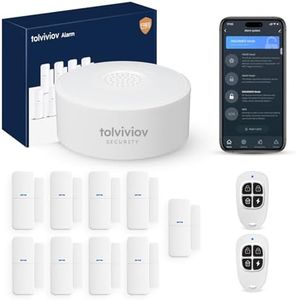We Use CookiesWe use cookies to enhance the security, performance,
functionality and for analytical and promotional activities. By continuing to browse this site you
are agreeing to our privacy policy
10 Best Window Alarm Sensors
From leading brands and best sellers available on the web.Buying Guide for the Best Window Alarm Sensors
Window alarm sensors help keep your home or office safe by alerting you if a window is opened or broken. Choosing the right sensor depends on your security needs, the type of windows you have, and how you want the system to fit in with your lifestyle. It's important to understand the main features so that you get a sensor that matches your needs, ensuring reliable protection and easy use.Sensor TypeThe sensor type describes how the alarm detects a window being opened or broken. The most common types are contact sensors, which detect when a window moves away from a magnetic base, and glass break sensors, which listen for the sound of breaking glass. If you are mainly worried about someone opening the window, contact sensors are usually enough. For areas where breaking the glass is a likely risk, like ground floor windows, glass break sensors add another layer of safety. Some systems even let you combine both for complete coverage.
Connection TypeThis spec refers to how the sensor communicates alerts—either via wires or wirelessly. Wired sensors connect physically to your alarm system, making them very reliable but more challenging to install. Wireless sensors use batteries and radio signals, offering easy installation and flexibility in placement. For renters or those wanting quick, tool-free setup, wireless is often the better choice. If you prefer a permanent, potentially more secure setup in a place you own, wired options could suit you better.
Power SourceSensors need power to work, either from batteries or through a wired connection. Battery-operated sensors are easy to install, and you don’t have to worry about running wires. However, you’ll need to remember to change the batteries from time to time—some models last for years, others need more frequent changes. Wired sensors are powered by your main system, meaning no batteries to worry about, but you might need professional help to set them up. Choose battery-powered if you want simplicity, and wired if you want longer-term, hands-off reliability.
Notification SystemThis determines how you are alerted when the sensor is triggered. Some sensors activate a loud alarm inside the building, while others can notify you through a smartphone app or link directly to professional monitoring services. If you’re often away or want immediate notifications on your phone, choose a sensor that supports app alerts. For home use where you want a loud, physical alarm as a deterrent, standalone alarms may be sufficient.
CompatibilityCompatibility describes whether the sensor works with your existing alarm system or smart home devices. Some sensors are designed to connect to major smart home brands, allowing you to automate routines or control everything from one app. Others are designed for standalone use. If you already have a smart home setup or plan to expand in the future, choose a sensor with good compatibility to avoid replacement headaches.
Installation MethodThis refers to how the sensor is mounted—using adhesives, screws, or brackets. Adhesive-mount sensors go up quickly with no tools, ideal for renters or temporary setups. Screw-mount options are more secure and permanent, suitable if you own your home. Consider your window frames too; some mounting styles work better on wood, others on metal or plastic. Pick the installation method that fits your living situation and confidence with simple DIY projects.
